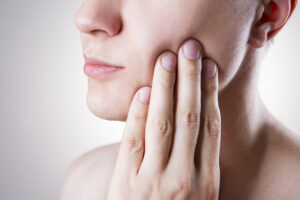Written by Taylor Woosley, Staff Writer. 1-week treatment of triamcinolone acetonide and 8-week spirulina supplementation significantly improved pain intensity and reduced healing time compared to triamcinolone acetonide treatment alone.
 Oral lichen planus (OLP) is a chronic inflammatory disease associated with altered cell-mediated immunological function1. About 15% of people with OLP develop cutaneous lesions, and 20% develop genital lesions, requiring long-term symptomatic treatment and surveillance monitoring2. Currently, the pathogenesis of OLP remains unclear, and innate and adaptive immunity and inflammation has been proposed to play crucial roles3.
Oral lichen planus (OLP) is a chronic inflammatory disease associated with altered cell-mediated immunological function1. About 15% of people with OLP develop cutaneous lesions, and 20% develop genital lesions, requiring long-term symptomatic treatment and surveillance monitoring2. Currently, the pathogenesis of OLP remains unclear, and innate and adaptive immunity and inflammation has been proposed to play crucial roles3.
Spirulina is a blue-green microalgae used as a nutraceutical food supplement due to its high content in protein, essential fatty acids, vitamins, polyphenols, and carotenoids4. Additionally, it contains phycocyanin, which has been extensively researched for its effect on inflammatory diseases5. It has been reported that spirulina improves macrophage activity, natural-killer cells proliferation, activation of T-cells, and up-regulating key cells and organs of the immune system enhancing their ability to counteract the action of infectious agents6.
Chaitanya et al. conducted a randomized, prospective, single-blinded study to evaluate the efficacy of spirulina in the overall reduction of inflammation in OLP. Subjects were included in the study if they had been clinically diagnosed with OLP, were between 18 and 70 years, and had visual analog scale scores between 5 and 8. Participants were divided into two groups: group A (spirulina, n=30) and group B (triamcinolone acetonide oral paste, n=30). Group A was informed to consume 500 mg spirulina twice a day for 8 weeks, along with 0.1% triamcinolone acetonide oral paste three times daily for a week. The triamcinolone paste, an oral steroid, was discontinued after one week but the spirulina supplementation continued for the 8-weeks. Group B used the oral steroid paste three times a day for the 8-weeks or until the symptoms subsided. A 3-month follow-up period was observed by all subjects.
Participants underwent a clinical examination to evaluate burning sensation, which was assessed with a 0-10 grading and the lesion size was assessed using the Thongprasom scale. Clinical parameters were assessed every 7 days over the 8 weeks, with monthly follow-ups being completed for 3 months. Significant findings of the study are as follows:
- A significant reduction in mean VAS scores was noted in group A from the first visit (7.23 ±95) and the third follow-up at the end of 3 months (0.70 ± 1.66). One-way analysis of variance showed a statistically significant difference (p = 0.00) between the VAS scores in group A and group B.
- Lesion size gradually decreased at each follow-up visit in group A, with 16 subjects experiencing zero lesions at the final visit. Chi-square analysis shows a statistically significant association between the lesion size and time intervals (p < 0.05).
Results of the study show that a combination of 1-week triamcinolone use and 8-week spirulina supplementation improved pain intensity and increased the healing time of lesions compared to triamcinolone treatment alone. However, subjects in both groups experienced a statistically significant improvement (p < 0.00) in VAS scores and lesion size. Study limitations include a short duration of the follow-up and the small sample size.
Source: Chaitanya, Nallan CSK, Diksha Chikte, Yellarthi Pavan Kumar, Garlapati Komali, Sandhya Pavankumar Yellarthi, Chelluri Shreya Reddy, Divya P. Harika et al. “Efficacy of Spirulina 500 mg vs Triamcinolone Acetonide 0.1% for the Treatment of Oral Lichen Planus: A Randomized Clinical Trial.” The Journal of Contemporary Dental Practice 23, no. 5 (2022): 552-557.
© The Author(s). 2022 Open Access This article is distributed under the terms of the Creative Commons Attribution 4.0 International License (https://creativecommons.
org/licenses/by-nc/4.0/), which permits unrestricted use, distribution, and non-commercial reproduction in any medium, provided you give appropriate credit to
the original author(s) and the source, provide a link to the Creative Commons license, and indicate if changes were made. The Creative Commons Public Domain
Dedication waiver (http://creativecommons.org/publicdomain/zero/1.0/) applies to the data made available in this article, unless otherwise stated
Click here to read the full text study.
Posted July 12, 2023.
Taylor Woosley studied biology at Purdue University before becoming a 2016 graduate of Columbia College Chicago with a major in Writing. She currently resides in Glen Ellyn, IL.
References:
- Rotaru D, Chisnoiu R, Picos AM, Picos A, Chisnoiu A. Treatment trends in oral lichen planus and oral lichenoid lesions (Review). Exp Ther Med. Dec 2020;20(6):198. doi:10.3892/etm.2020.9328
- Raj G, Raj M. Oral Lichen Planus. StatPearls. StatPearls Publishing Copyright © 2023, StatPearls Publishing LLC.; 2023.
- Zhang H, Xu B, Liu J, Guo B, Sun H, Yang Q. SDHB reduction promotes oral lichen planus by impairing mitochondrial respiratory function. Ann Transl Med. Dec 2022;10(24):1367. doi:10.21037/atm-22-5999
- Yang Y, Du L, Hosokawa M, Miyashita K. Spirulina Lipids Alleviate Oxidative Stress and Inflammation in Mice Fed a High-Fat and High-Sucrose Diet. Mar Drugs. Mar 4 2020;18(3)doi:10.3390/md18030148
- Fernandes R, Campos J, Serra M, et al. Exploring the Benefits of Phycocyanin: From Spirulina Cultivation to Its Widespread Applications. Pharmaceuticals (Basel, Switzerland). Apr 14 2023;16(4)doi:10.3390/ph16040592
- Calella P, Cerullo G, Di Dio M, et al. Antioxidant, anti-inflammatory and immunomodulatory effects of spirulina in exercise and sport: A systematic review. Front Nutr. 2022;9:1048258. doi:10.3389/fnut.2022.1048258
